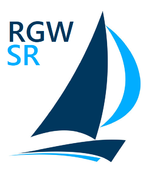Royal Grand Wulfram Sailing Regatta
 | |
| Founded | 1711 AN |
|---|---|
| Membership | International |
| President |
|
The Royal Grand Wulfram Sailing Regatta is an annual tall ship sailing competition hosted by the South Sea Islands.
Over the course of two weeks, a series of competitive races set off from Joseph Town, follow a route circumnavigating the island of Grand Wulfram, before returning to a finishing line located at the starting point.
History
Building on a long history of competitive ship racing in the South Sea Islands, the nation's various sailing clubs banded together to create an international tournament for the first time in the year 1711. The purpose of the tournament, in addition to promoting sailing as a sport, is to attract corporate sponsorship to assist with the development and maintenance of tall ships.
Qualification
The competition was created with the intention of being open to as many vessels as possible and, for that reason, the rules for entry are broad. In order to qualify for the relevant class, a vessel simply has to be deemed seaworthy by the judges, and be able to sail using wind power alone once outside the harbor.
Classes
The regatta consists of races between three classes of ships. Depending on the number of ships enlisted in a class, more than one race may occur for each class. In that event, the finishing times of the winner of each race in a class are compared to determine the overall winner for that class.

Class A
The Class A ships are the largest ships in the regatta, and typically those that attract the most attention. To qualify as Class A, a vessel must be a fully rigged ship, bark, or schooner, with a hull constructed from wood, metal, or some combination of the two. Given these requirements, many ships competing in this class are historic vessels and those owned by national navies.
Class B
Class B typically attracts more modern ships. To qualify, a vessel must be a fully rigged galleass, sloop, or ketch. While this class does feature large vessels, those competing are typically smaller than those in Class A.
Class C
The requirements for Class C are very loose, and essentially include all vessels that don't fit into either of the other two classes. The only strict entry requirement is that the vessel must have one hull only- therefore catamarans are not eligible to compete. Many Class C competitors are hobbyists rather than professionals, and the Class C races often consist of a variety of pleasure craft, private yachts, and seafaring barges.
Notable entrants
| Origin | Name | Constructed | Class | Notes |
|---|---|---|---|---|
| SSIDF Hercules | 1650 | Class A | Naval training vessel of the South Sea Islands Defence Force. | |
| SS Grand Rapids | 1706 | Class B | Privately owned vessel sponsored by Great Southern Utilities |